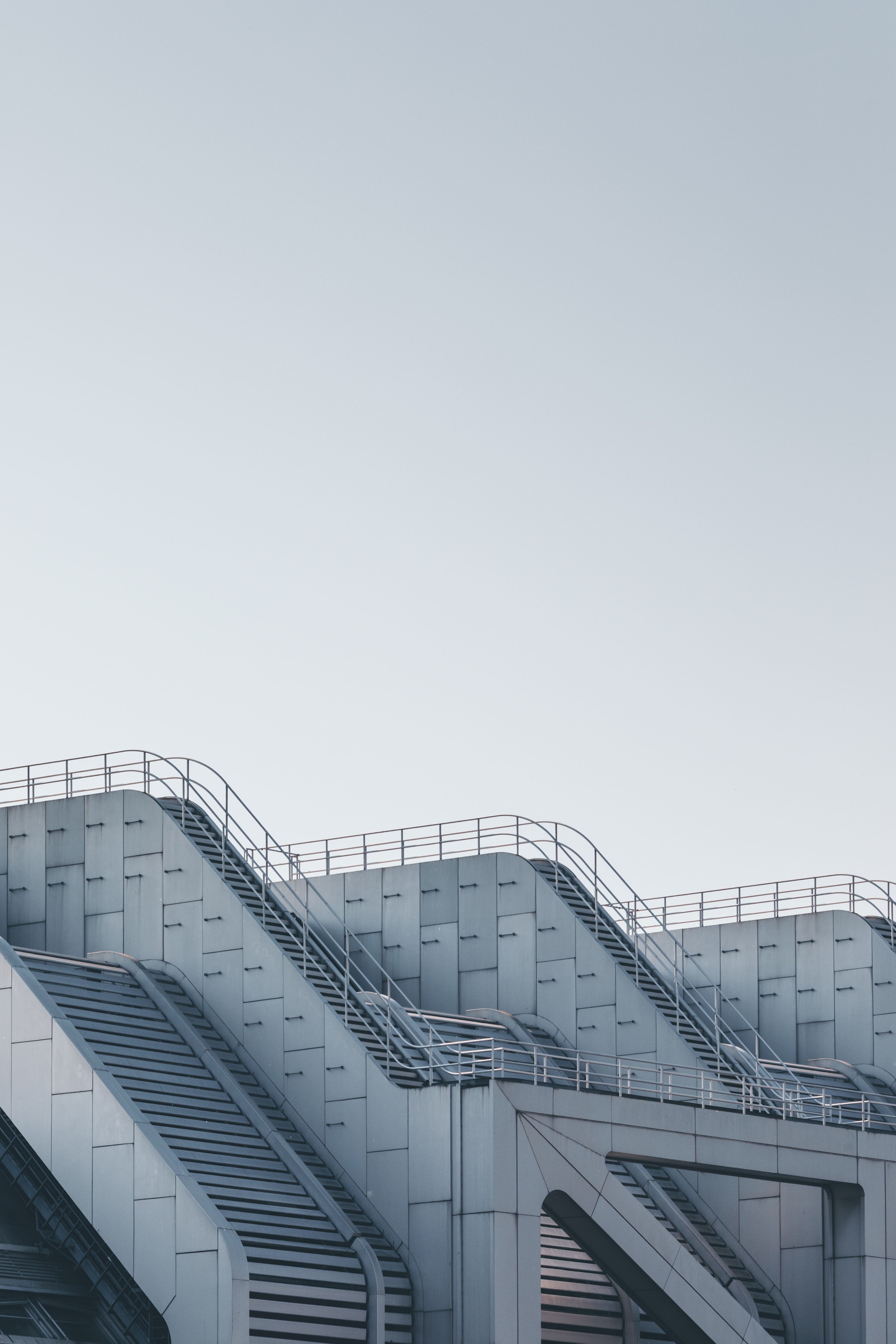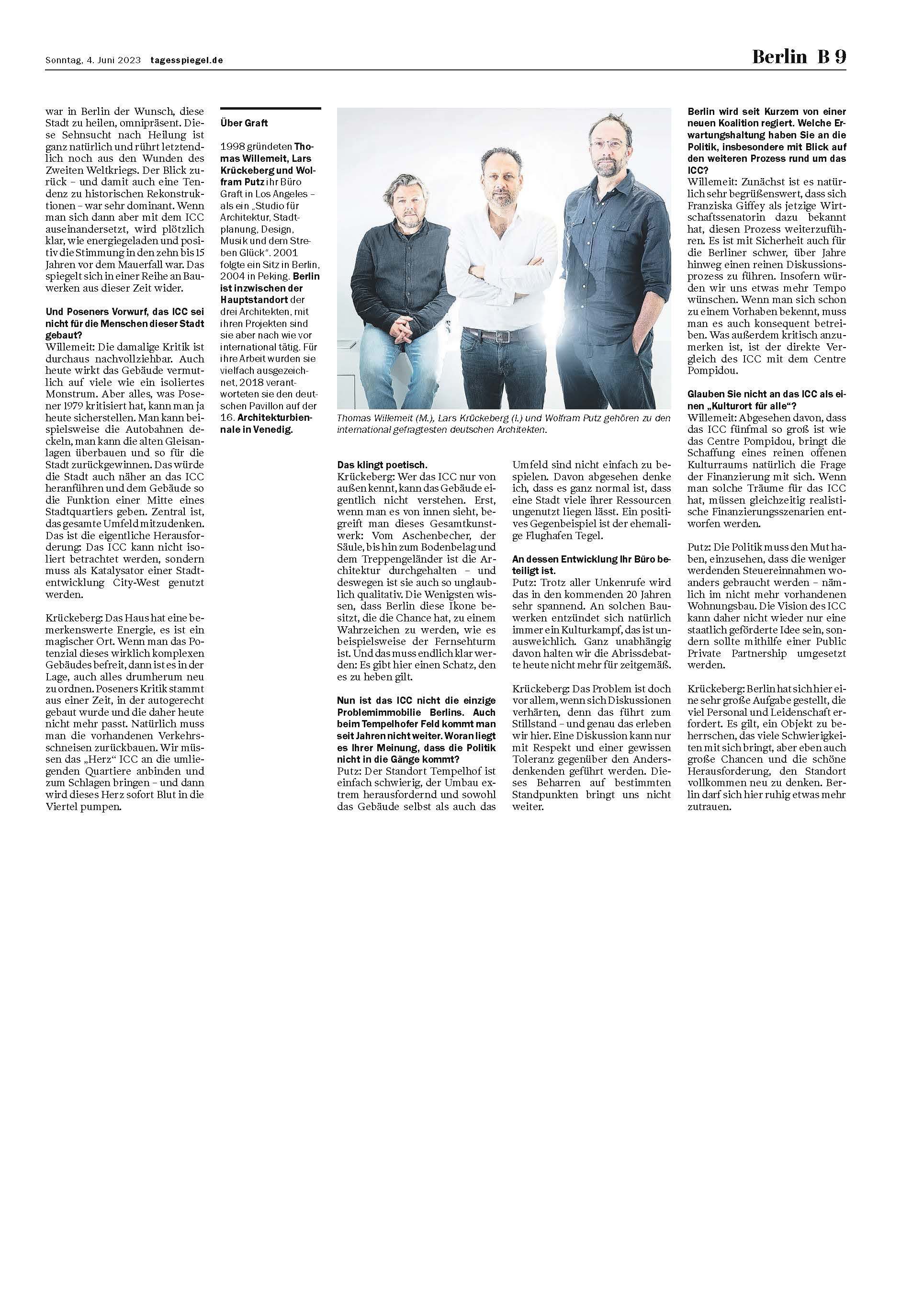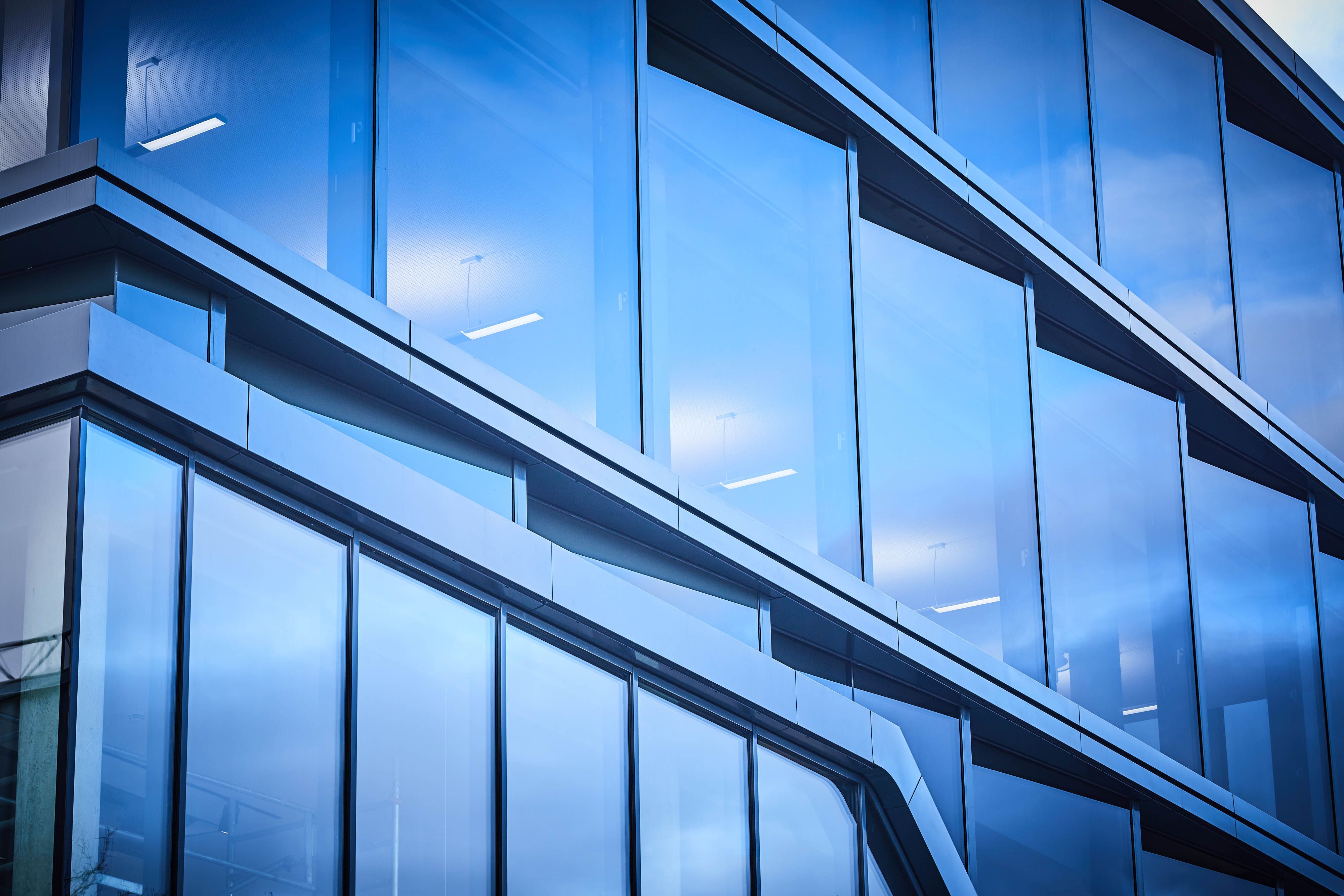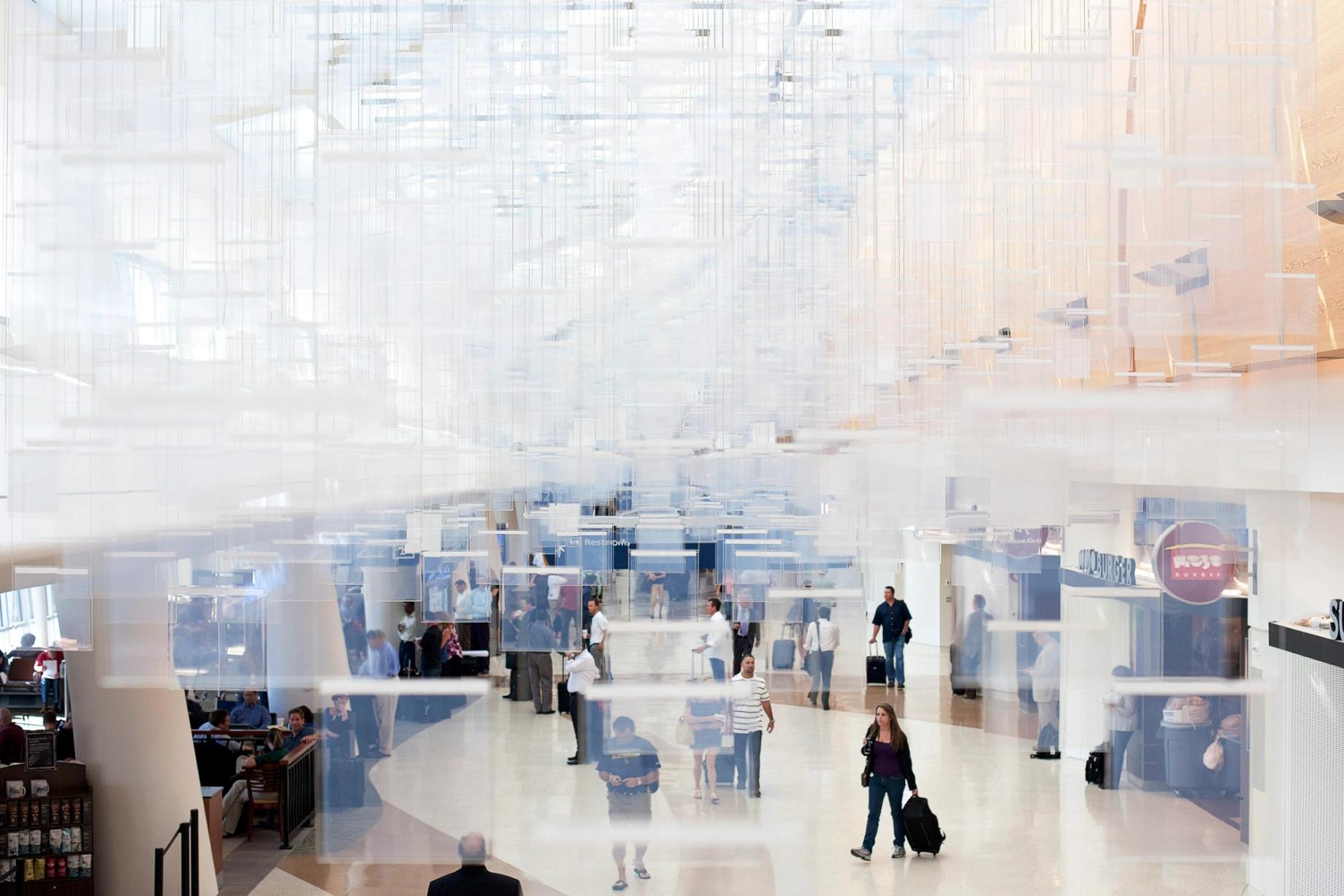>>>>>>>> Song for Space Age Atmosphere
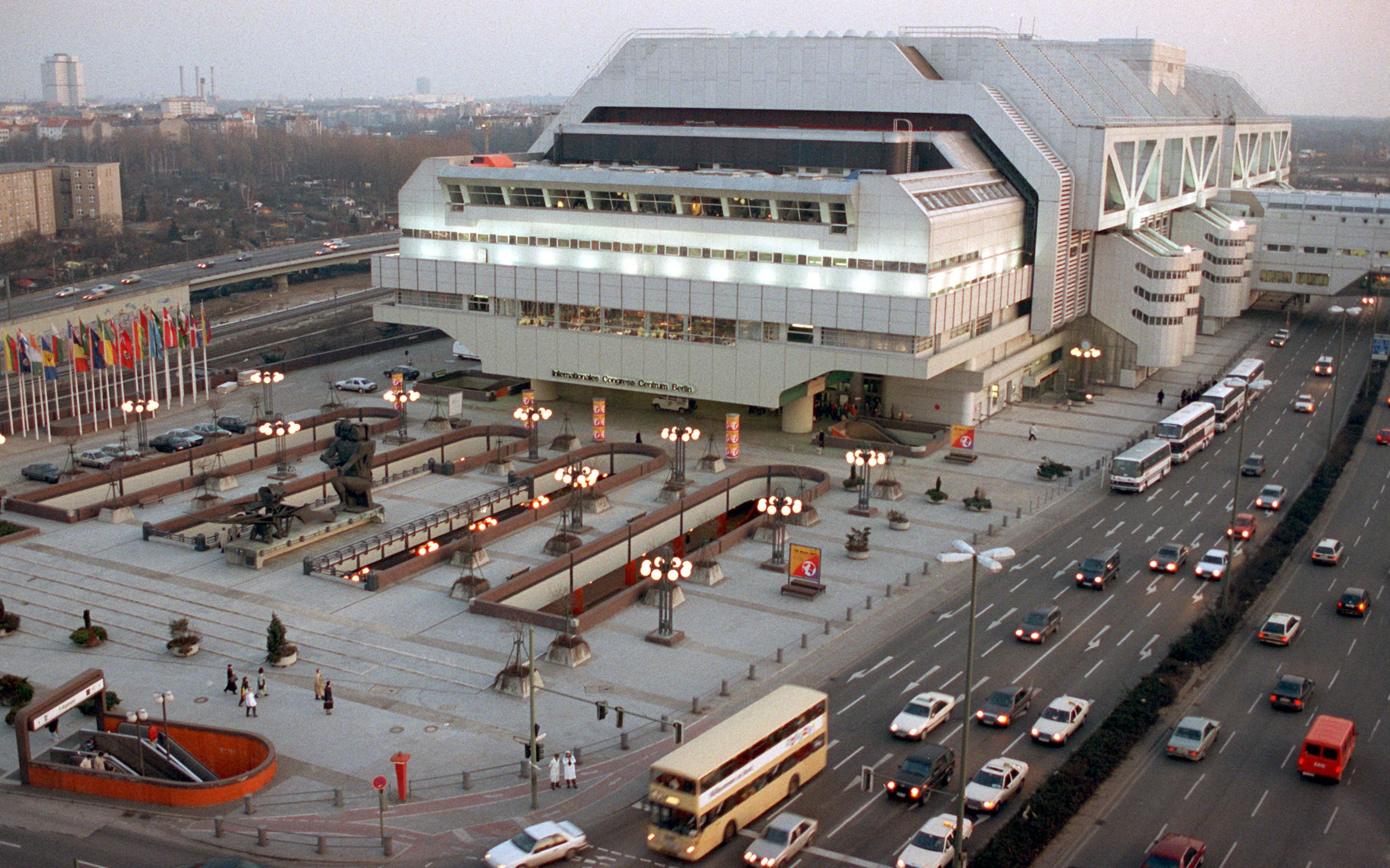
The vacant Internationales Congress Centrum (ICC) has been a talking point in Berlin since its closure in 2014.
>>>>>>>> GRAFT Interview in Tagesspiegel 4. Juni 2023
Since then, various parties have publicly voiced their desire for an economically viable restoration of the building and a reactivation of the entire site. A fresh look at the origins of this aluminum colossus shines light on important aspects of Berlin’s recent history.
>>>>>>>> Exhibition "Suddenly Wonderful" at Berlinische Galerie
It reveals that the ICC is much more than an architectural icon. Crossing the threshold into its soft interior is to embark on a journey back to an era in which an optimistic vision of the future prevailed.
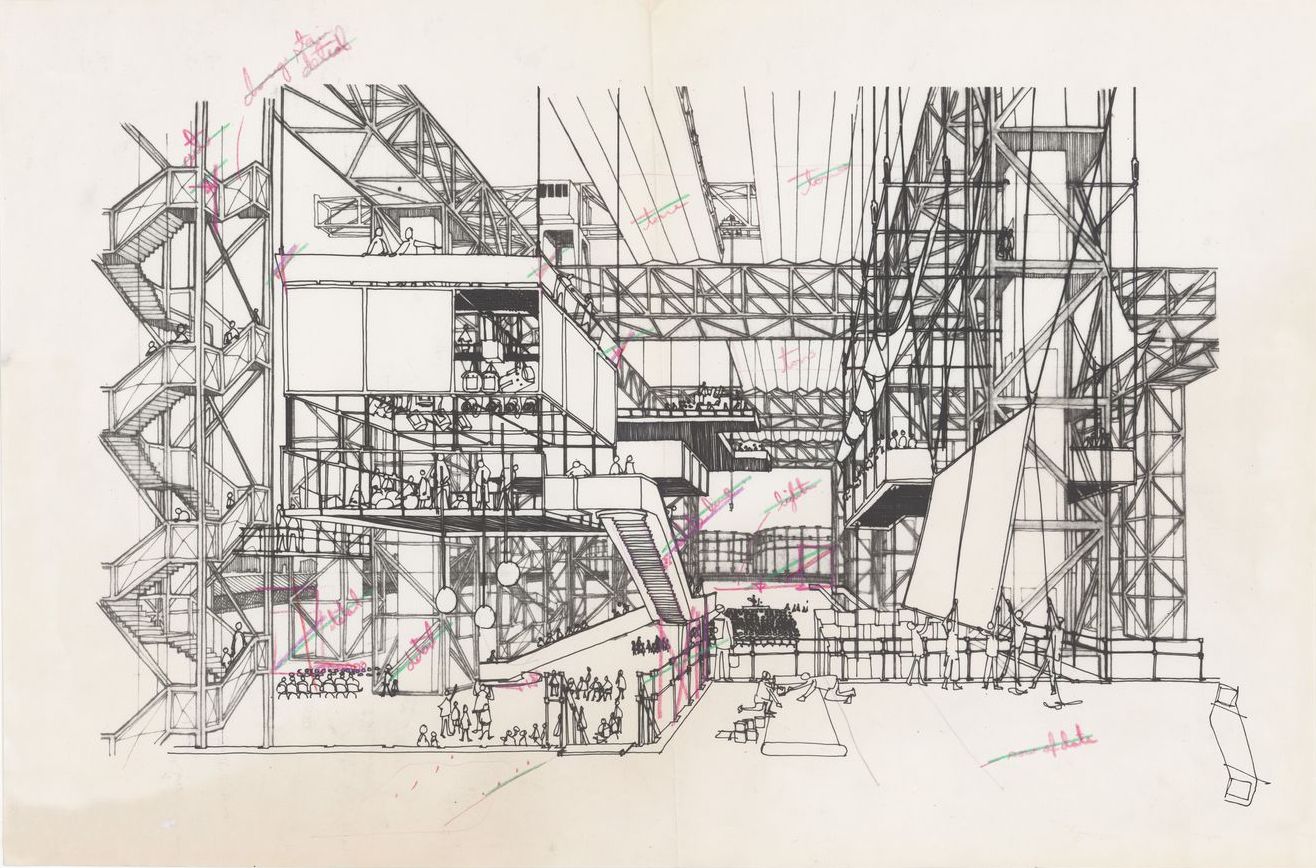
Inspiring, forward-looking metaphors to describe the impressive architecture of the ICC are terms like "spaceship," "machine," "social utopia," "Gesamtkunstwerk." These are contrasted by casual Berlin terms such as "Noah's Ark," "Charlottenburg Battleship," "aluminium monster" or "UFO".
The architect as visionary
An entire universe lies hidden behind the high-tech façade of this fascinating architectural object – a Gesamtkunstwerk expanding in three dimensions combining architecture, industrial and interior design and the entire spatial planning spectrum of the postmodern pop and high-tech movements. In this context, the 1970s offered the architects Schüler and Schüler-Witte a completely new role: as visionaries of the future. The ICC was created as a kind of space station for the coming together of the international community on the isolated island of West Berlin, a place that manifested an optimistic yearning for freedom and the future. The building also alludes to a second, special kind of spatial experience that extends far beyond the physical boundaries of Berlin and encompasses a world of unlimited possibilities. It is this aspect that exerts a magical appeal and continues to fascinate visitors to this day.

Designed with a creative spirit that typified the optimistic vision of the future prevalent in the 1970s, the ICC has become a symbolic architectural icon. The building appears as a utopian manifestation that echoes the international discussions of Metabolists and Situationists in the 1960s, who saw the city as an “event space” and architecture as the “stage” on which this happened. It was an era that saw the creation of captivating utopias, three-dimensional structures, and spatial machines, exemplified by the designs of Cedric Price, Constant, and Archigram.
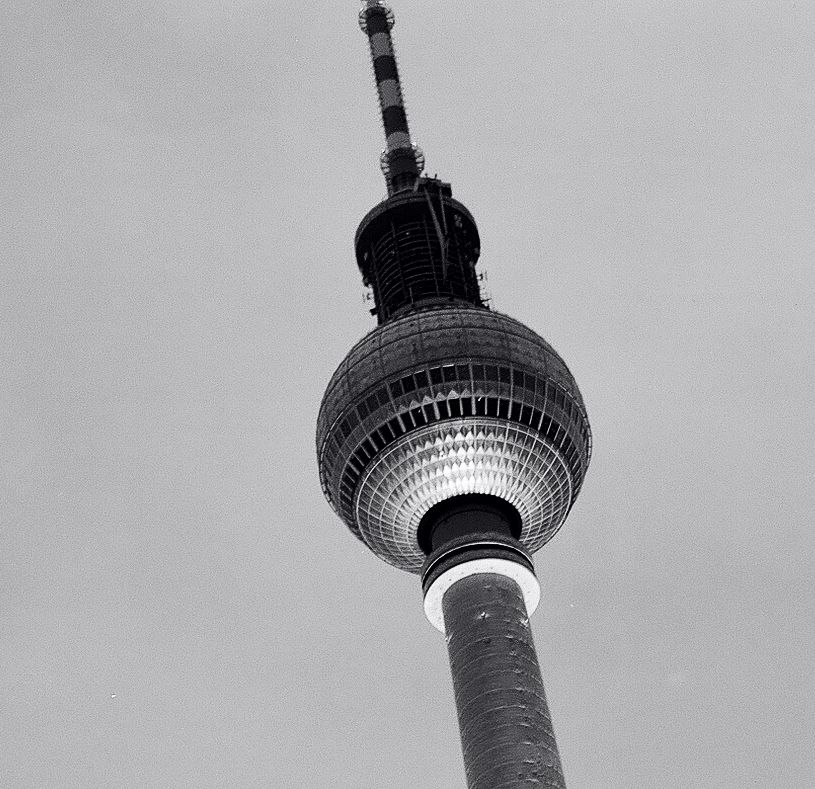
This faith in the future, however, seems particularly evident in many of Berlin’s infrastructural projects of the time, especially those at the intersection of East and West. At the time, Berlin was at the focus of world events and a showcase for fantastical constructions in the fields of mobility and interchange, like Berlin Tegel Airport, the tube stations designed by Rainer Gerhard Rümmler, the Bierpinsel, and later the ICC. Architecture in East Berlin was also being driven by a similar enthusiasm, introducing the “space age” into the architecture scene across the globe, with the Fernsehturm and Ulrich Müther’s hyperbolic paraboloid structures as built examples. The ICC aimed to be the crowning glory of this, a space station to which the whole world was invited.

A shift in mentality
The prevailing mood prior to the grand opening of the ICC in 1979, however, stands in stark contrast to the cautious mentality present in contemporary German society. Since reunification, Berlin has been “critically reconstructed” and seen historical buildings rebuilt. The planning of the ICC (1975–79), on the other hand, was marked by a fascination with the future. Fueled by the competition between East and West – which expanded into the field of space exploration – the building concept became an exclamation point in the rivalry between the two vying systems.
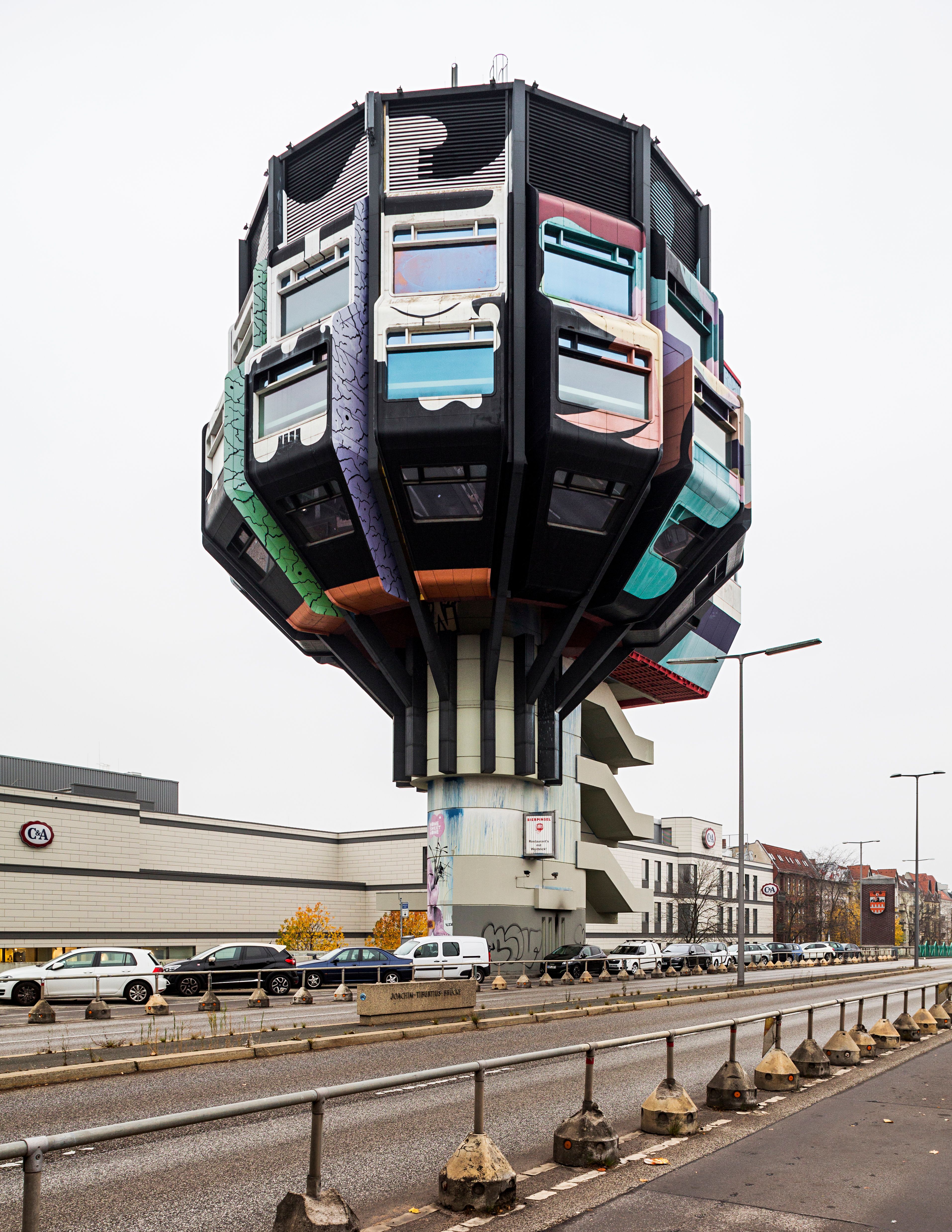
Both sides of the city claimed to be taking up the task of building for the future of Berlin and to be looking to grow beyond the city’s past and the present. Unlike the Fernsehturm, built just six years earlier in East Berlin (1965–69) and still perhaps Berlin’s most famous landmark to this day, the ICC is finding it difficult to develop a new identity. Perhaps this is due to the combination of space-station aesthetic and ornamental levity present in these two mega-structures, a way of thinking from which we are now light-years away.
Visions of the future: then and now
At the time of the ICC’s creation, the fascination with technology was tied in with ideas of individual and collective liberation and emancipation – but not only in the West. Space age meets flower power, high gloss meets pop, machine meets plush. The lounge-like berths with leather armchairs and the futuristic luxury feel of the contoured curves of aluminum cars and ash trays are translated from American to German throughout the ICC. The technology, developed as a server of humankind and imitating nature, organically assumes its domain in a modular manner, becoming both a source of inspiration and hope.
Upon entering the ICC, you are still overcome with the feeling of being given a new identity, one you can don like a spacesuit. Dressed in this you can explore the ship in its entirety. The transition from contemporary citizen to future inhabitant is liberating, adventurous and at the same time innocent, simple – similar to the aspirations of current social utopias. In the ark of the future everyone is equal; here the crew will find their roles anew. Any attempt to transport the original concept of the ICC into today’s age must draw on this optimism of the past, and in this way provide Berlin with an impetus for a new-found self-confidence.
AN INVITATION TO A NEW WORLD
The significance of the ICC isn’t merely due to its enormous size, but also in its autonomous function as an independent, self-referential building. As a “space station” it encapsulates many mobilities into a single architectural interface. Parking, driving, and walking are all possible within the confines of the building. Moving stairways and hydraulically hinged auditoriums also illustrate that the building itself is motile.
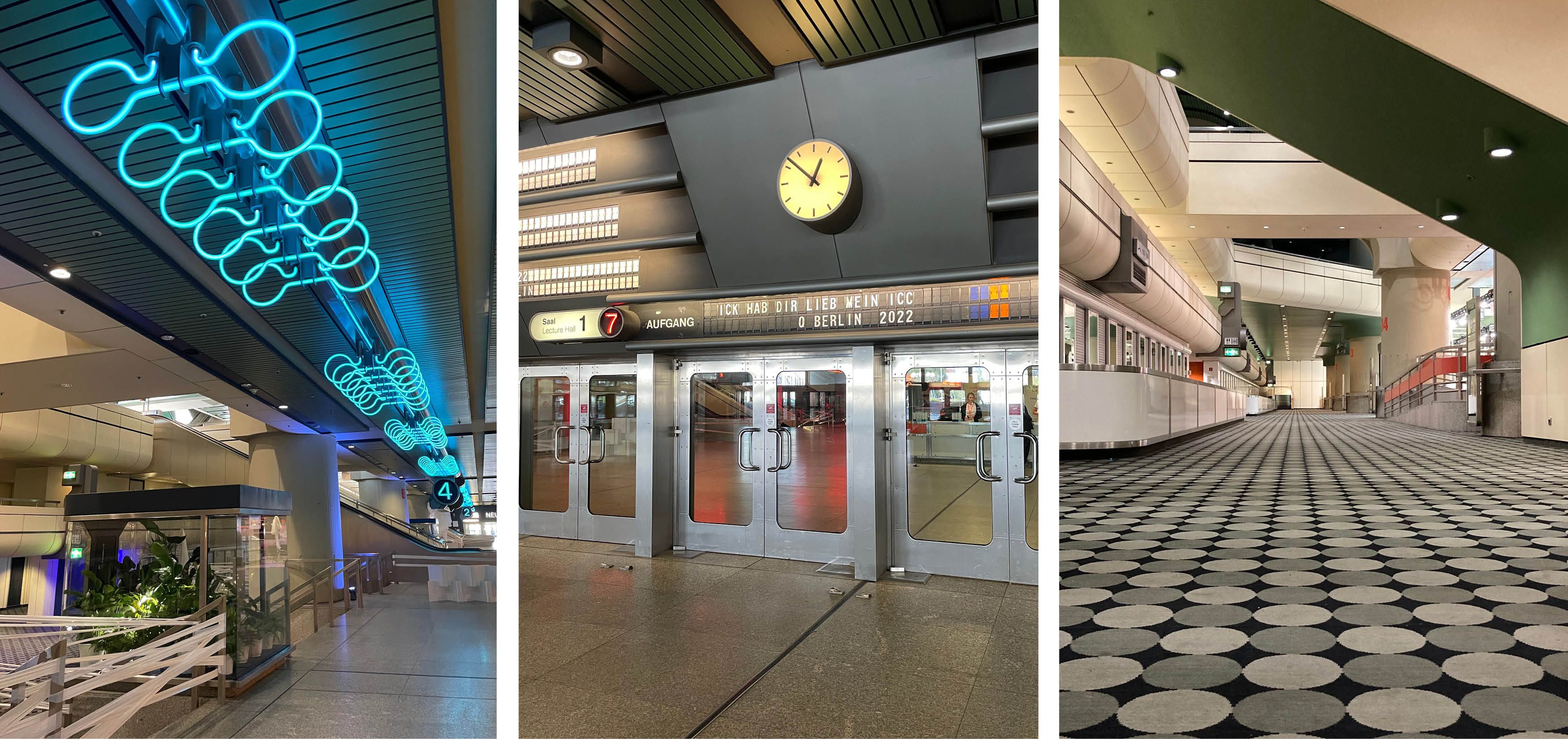
Expansive passageways connect futuristic-looking lecture halls, while the carpeted floor lends the feeling of an endless playground. It’s an alternative world in which the architects devised everything – right down to the smallest detail. Futuristic neon lights indicate ascent routes via four parallel escalators that lead to a mezzanine level with a gallery-like view down onto the “marketplace.” Higher up there is an auditorium featuring fully movable seating, in which movies such as Stanley Kubrick’s 2001: A Space Odyssey could have been filmed.
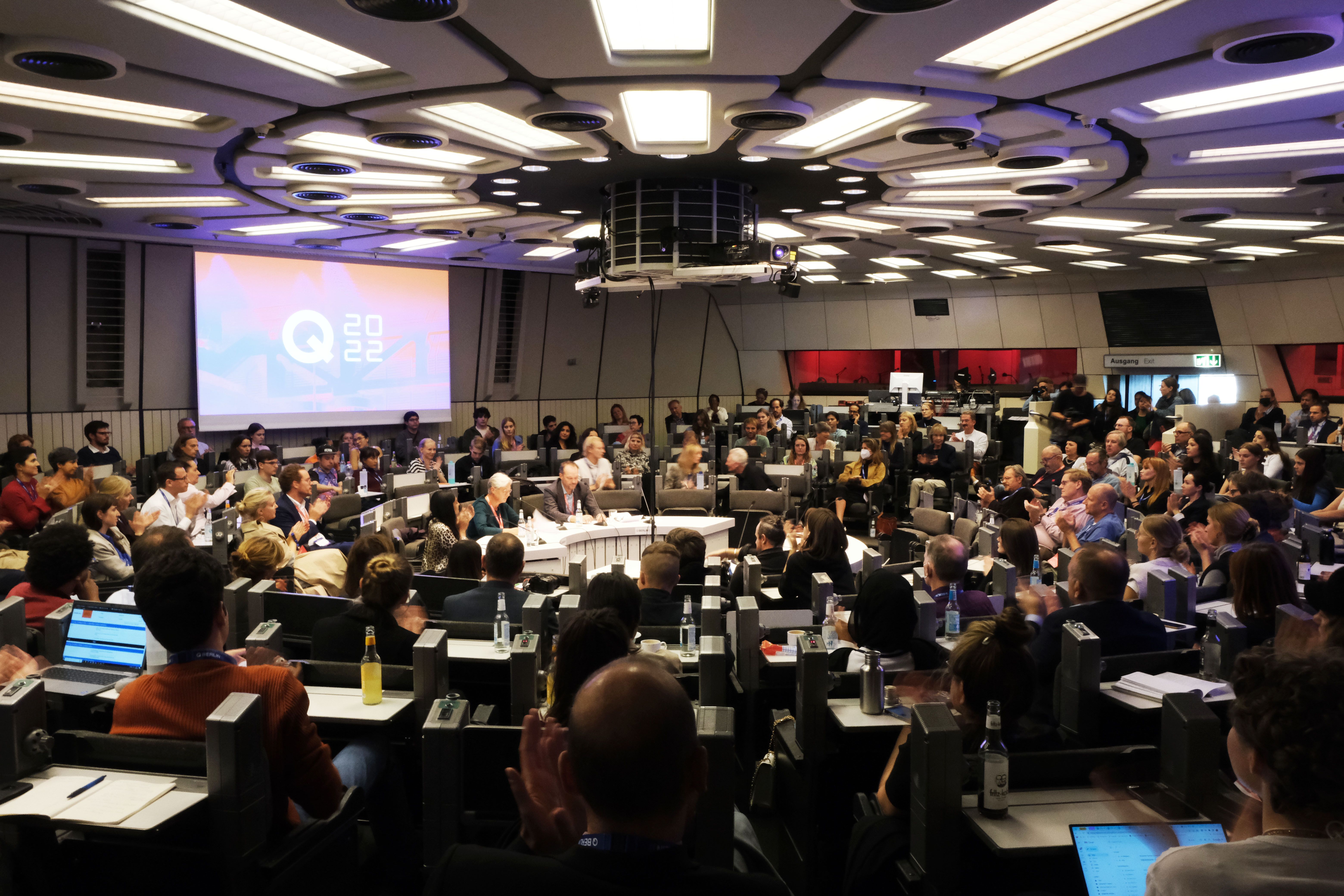
This spatial generosity, which enables a physical experience of space, celebrates the positive sentiment found in science fiction, where everything seems possible and even uncanny realities seem enthralling and explainable. The voyage here is to a future that we may have already passed, or one we were never really able to reach.
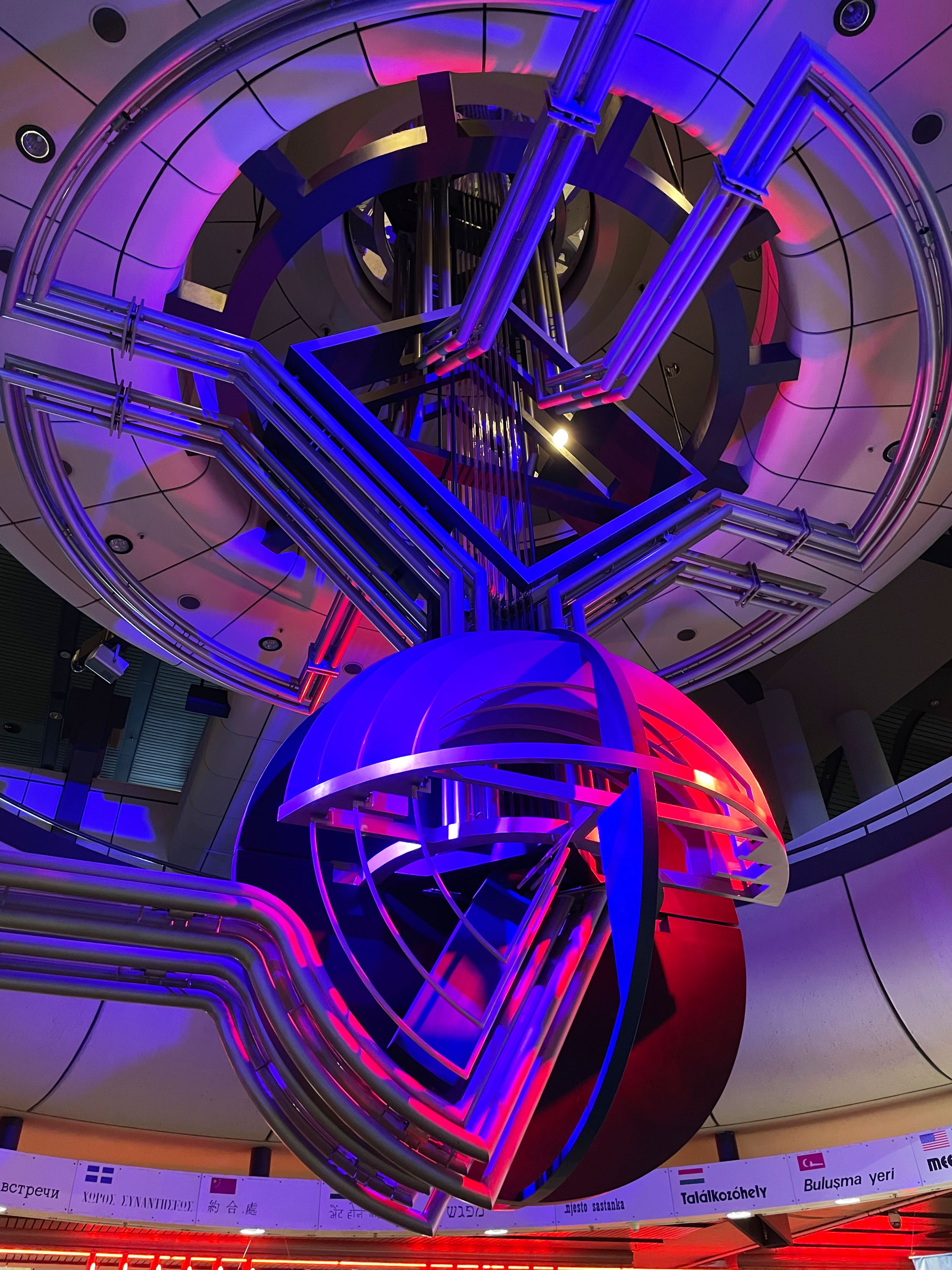
The oft-lost faith in the future has been preserved here as a relic, palpable in the air, tangible in space. This feeling is underpinned by the accomplishments of others involved, practitioners of architecture’s parallel arts: the neon guidance system by Frank Oehring, for example, was revolutionary for its time and enhances the spatial qualities of the passageways and open areas, which were largely shrouded in darkness and intended as spaces for communication. The integration of the building’s technical facilities into its design endows it with an almost neo-Baroque character, a quality typical of Gesamtkunstwerke. Despite being created over 50years ago, this idea of technology still seems current to us. The interaction between human and technology, the machine as a sensation, this is the overriding theme of the ICC. And that is something we can still draw inspiration from!
Even as a “sleeping giant,” the silver-gray colossus appears like a built aggregate for storing and processing urban energy. This “gray energy” alone calls out for a new function, a new life. If there is a fitting location in which questions of the future can be addressed, then the ICC is it – a place where the future can be rethought. And while the Fernsehturm might have long been Berlin’s towering landmark, the ICC can once again become a space station of exchange between Berlin and the world – a campanile and a cathedral of longing for a better future.

